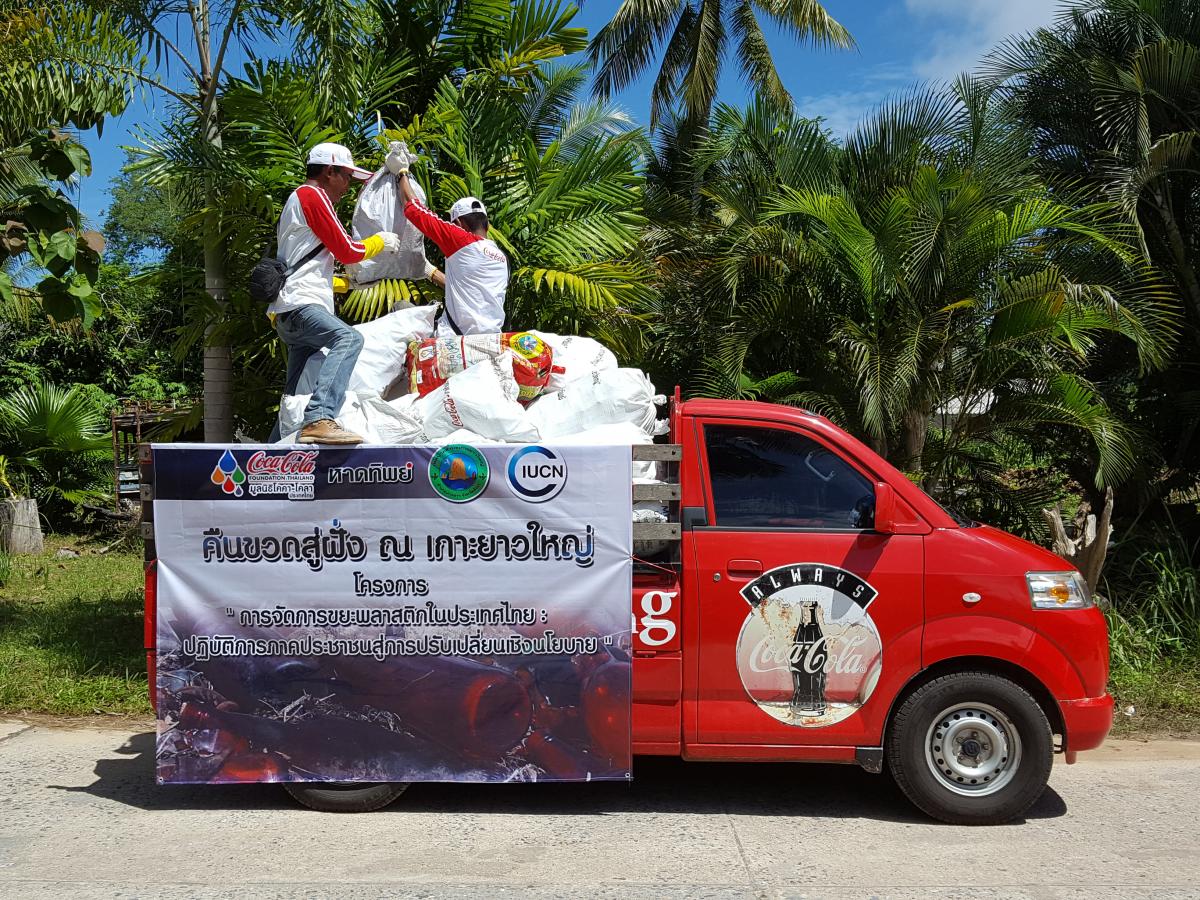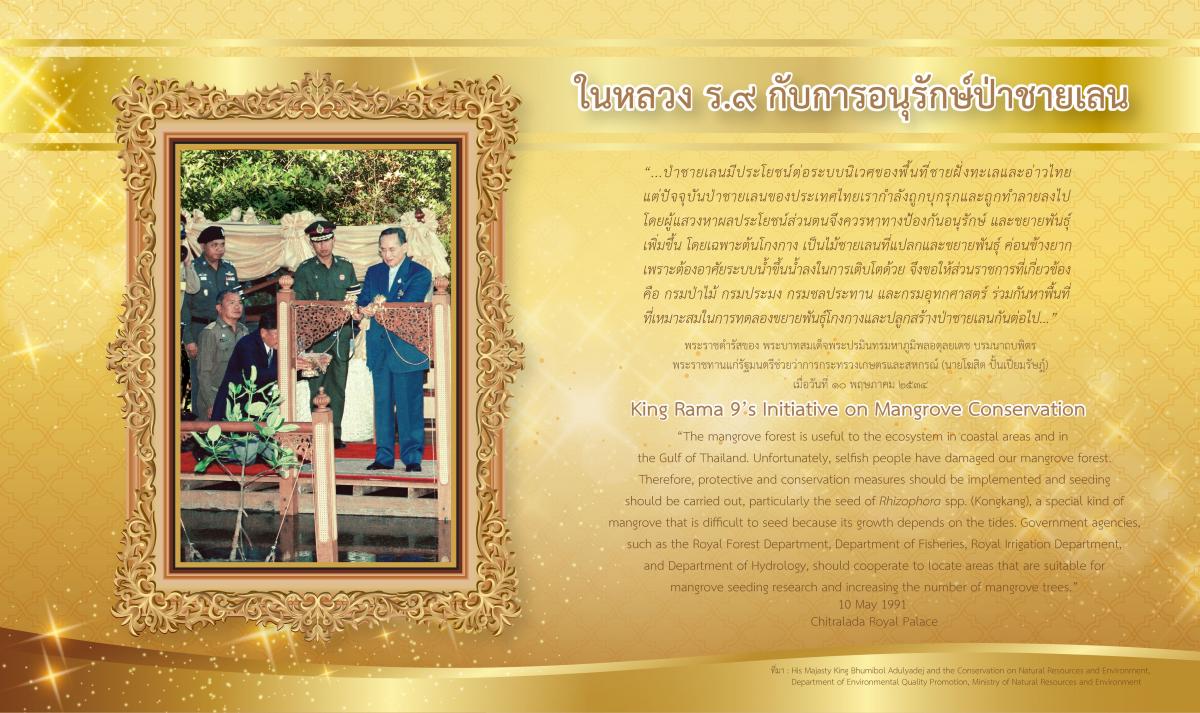Beloved no more: New study sheds light on human-elephant conflict in Thailand
A new study conducted by the Thai foundation Bring the Elephant Home (BTEH) shows that certain types of deterrence measures could reduce human-elephant conflict (HEC) in Thailand, and save lives on both sides. The study’s findings suggest that people’s interest in conserving elephants is more or less proportional to how much they stand to gain from the animals’ presence. It also found that those currently in conflict with elephants show a willingness to shift to alternative methods of deterrence to those currently being employed.
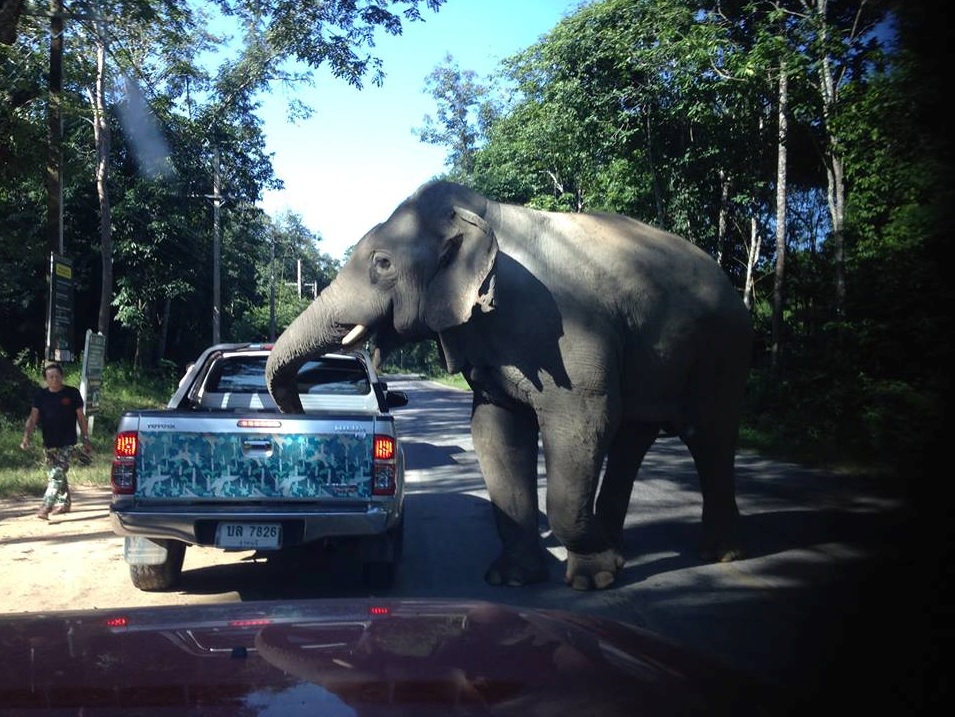
A wild elephant investigates a pickup truck in Thailand
Photo: © IUCN / Bampen Chaiyarak
For people working in sectors that benefit from the presence of elephants, such as tourism or conservation work, pride and pleasure taken in that work was found to contribute to more positive attitudes. Socio-economic variables have an influence as well. People who have often come into conflict with elephants, especially older, lower-income and agricultural workers, have particularly negative views towards them and their conservation. 70% of plantation owners surveyed as part of the study believed that elephants should be completely eradicated, compared to 34% of households.
The study also looked at elephant deterrence strategies and the willingness among affected communities to consider alternatives. Rural communities were found to mostly use strategies like firecrackers and electric fencing, which can be fatal to elephants. However, the communities were generally open to alternatives like reforestation and patrolling. Beehive fencing, a promising strategy that BTEH is experimenting with in Thailand and South Africa, provides natural deterrence and supplemental income through honey. This kindled interest among 80.4% of the plantation owners.
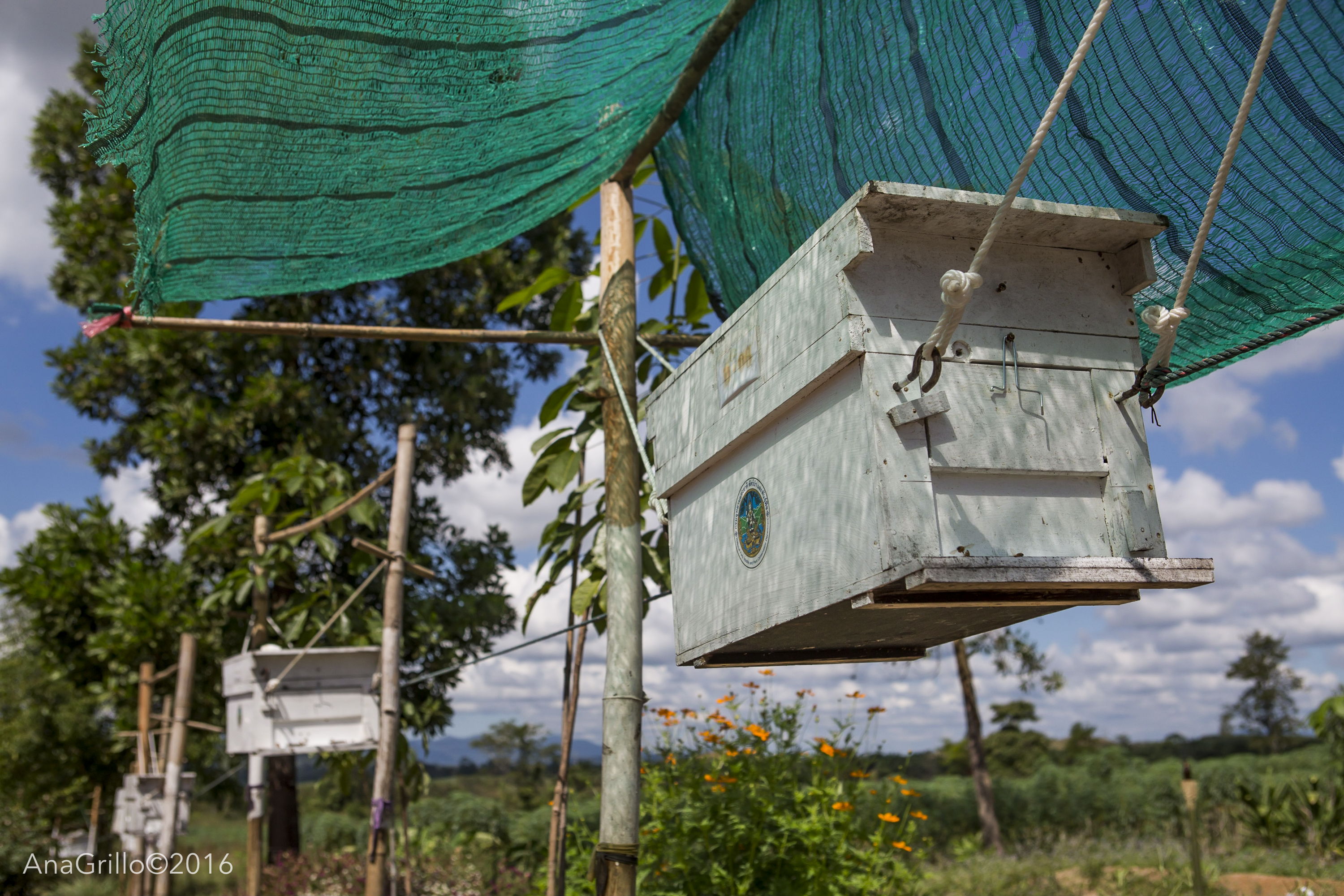 Beehive fencing is a sustainable and non-lethal method of elephant deterrence
Photo: © Ana Grillo
Beehive fencing is a sustainable and non-lethal method of elephant deterrence
Photo: © Ana Grillo
BTEH Director and conservationist Antoinette van de Water used questionnaires to assess the attitudes of 410 households and 46 plantation owners in seven villages around Salakpra Wildlife Sanctuary in western Thailand, where human-elephant conflict is rife. In addition to the questionnaires, BTEH organised a Participatory Action Research session, bringing community members and park rangers together to talk about conflict resolution and priorities for conservation action.
Authored by van de Water and Dr Kevin C. Matteson, an ecologist at Miami University in Oxford, Ohio, the study was published in peer-reviewed science journal PLOS One on 1 June 2018. The study was conducted as part of the Conservation Leadership Program of BTEH, which has been supported by the Critical Ecosystem Partnership Fund (CEPF) since 2015. CEPF, for which IUCN is an implementing partner in the Indo-Burma region, equips civil society groups with the funding to conserve their environment and influence decisions that affect lives, livelihoods and, ultimately, the global environment. Thanks to CEPF support, BTEH and local community leaders were able to provide financial assistance, social recognition, and ecological restoration expertise to the local community to encourage their engagement in conservation activities.
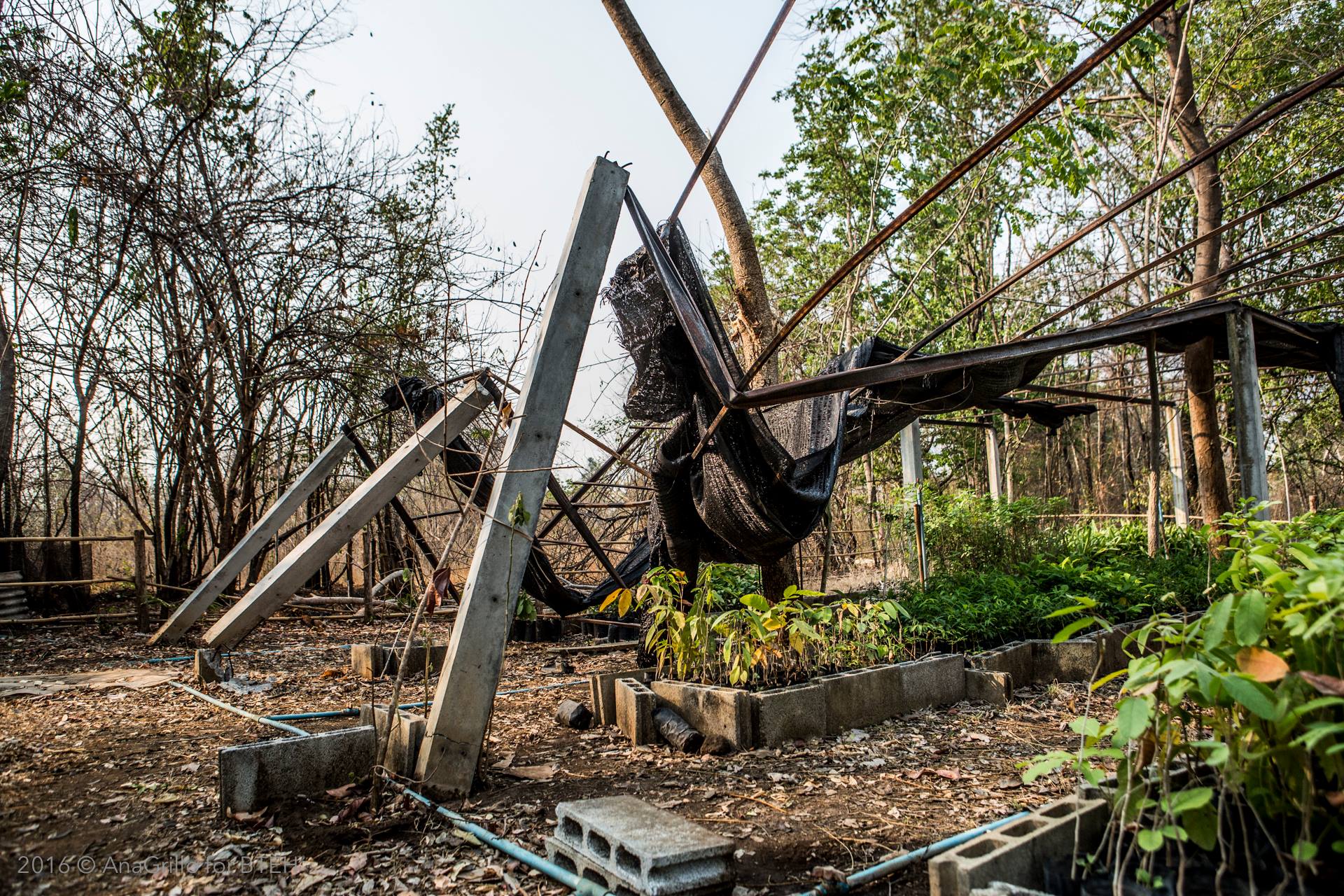 A community tree nursery severely damaged by elephants
Photo: © Ana Grillo
A community tree nursery severely damaged by elephants
Photo: © Ana Grillo
Elephants, revered and loved for ages in Thailand, have lately become a problem. Human settlements are expanding into elephant habitat, leaving wild populations of the species no other option but to invade human territory. Here, they can ravage plantations and destroy houses, which often escalates into direct confrontation. Conflicts between people and elephants result in hundreds of deaths per year on both sides, and pose a significant threat to the survival of Asian elephants, which are classified as Endangered on the IUCN Red List of Threatened Species™.
Long-term prevention of human-elephant conflict will only be possible through substantive change in land use choices. In the meantime, according to van de Water’s study, if elephant conservation can go hand in hand with benefits for the local population, both people and elephants stand to gain.
Founded in 2000, the Critical Ecosystem Partnership Fund is a global leader in enabling civil society to participate in and benefit from conserving some of the world’s most critical ecosystems by providing grants for organisations to help protect biodiversity hotspots, Earth’s most biologically rich yet threatened areas. CEPF is a joint initiative of l'Agence Française de Développement, Conservation International (IUCN Member), the European Union, the Global Environment Facility, the Government of Japan (IUCN State Member), the MacArthur Foundation and the World Bank.
IUCN is leading the second phase of CEPF's work in the Indo-Burma hotspot, working together with the Myanmar Environment Rehabilitation-conservation Network (MERN) and Kadoorie Farm and Botanic Garden (KFBG) to form the CEPF Regional Implementation Team (RIT).
